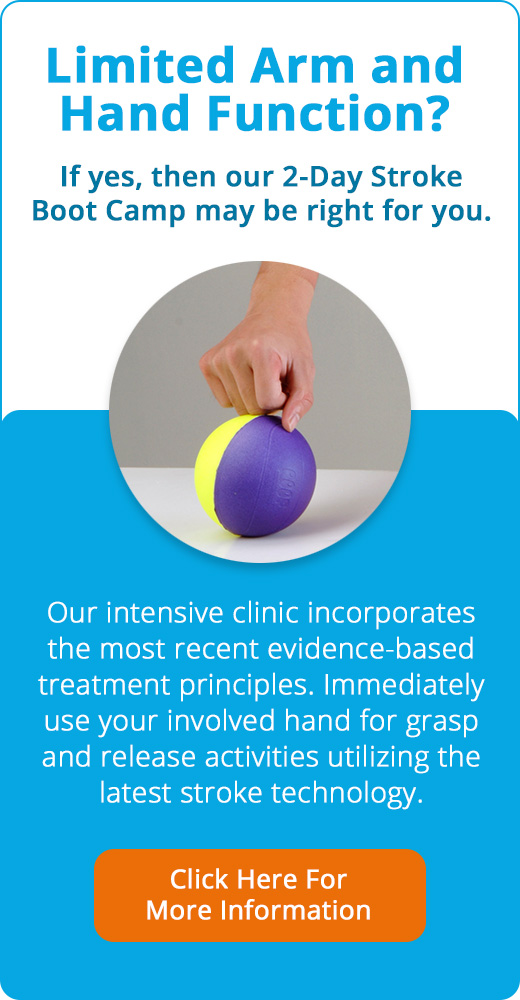Should You Strengthen a Spastic Muscle?
NeuroRehab Team
Wednesday, November 23rd, 2022
Great question. The answer is ABSOLUTELY!
For some clinicians, strengthening a hyperactive or spastic muscle is a very controversial topic. The thought of having stroke survivors squeeze their spastic finger flexors or flex their overactive biceps causes some clinicians to cringe.
Are You Overstretching Your Spastic Muscles?
Lynette Diaz, COTA/L
Monday, December 23rd, 2019

Stretching can be a very important part of recovery especially following a stroke, when feeling, sensation and movement are returning to a previously flaccid limb. However, is it possible to stretch too much or too hard? Yes it is.
Clinicians frequently see patients handle their affected limbs rather aggressively in an effort to “make it move” or “get it loose”, often stretching their fingers, wrist, elbows and shoulders too far too fast. This may partly be due to lack of sensation or awareness.
Muscle Tone Following Stroke
Dorothee Zuleger, MOT, OTR/L, DRS
Thursday, November 21st, 2019

Following a stroke, abnormal muscle tone is a common complication. A single muscle or a muscle group may become completely paralyzed. This is known as hypotonic or flaccid or a muscle may increase in muscle tone. This is known as hypertonic or spastic. This abnormal tone usually occurs in the side of the body opposite to the side of the brain lesion.
Best Spasticity Treatment Ideas Following Stroke
Dorothee Zuleger, MOT, OTR/L, DRS
Tuesday, July 3rd, 2018

Spasticity is a condition in which a muscle or group of muscles is hyperactive and unable to turn off and relax. After an injury to the brain or nervous system signals to and from a muscle are not regulated as they should be and therefore create abnormal muscle tone. This constant state of contraction can cause, pain, stiffness and shortening of soft tissue limiting normal range of the joint. The degree of spasticity can range from mild muscle stiffness to severe, painful, and uncontrollable muscle spasms.

